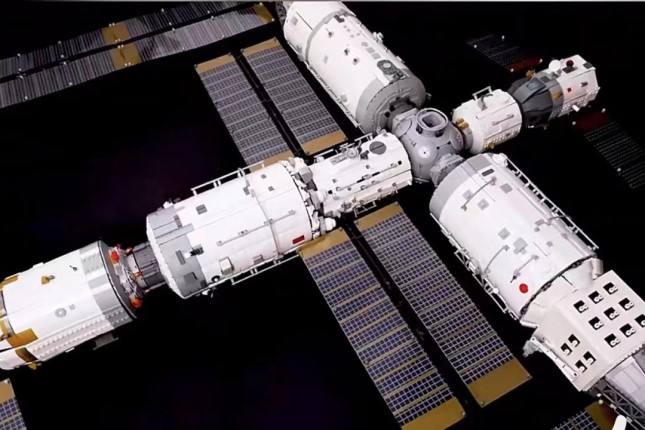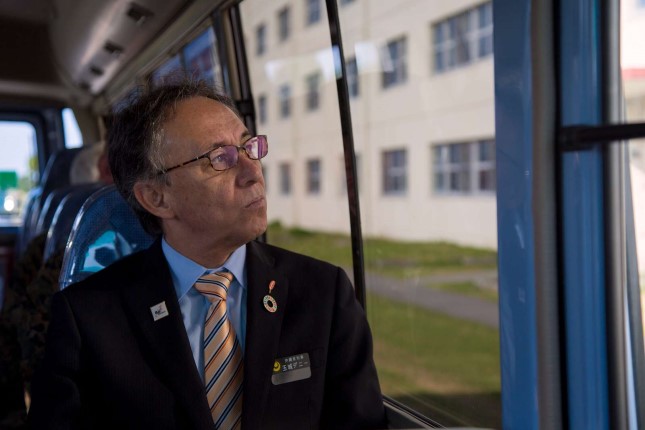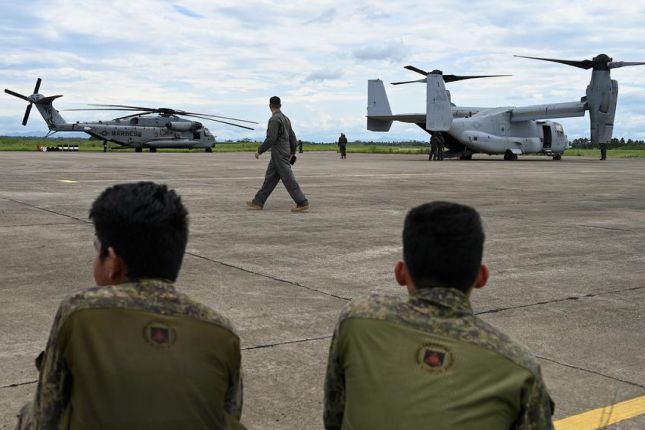The China Space Station has successfully rolled out its first extravehicular radiation biology experimental payload outside Mengtian lab module, which is a device designed to study biological experiments under space exposure, and relevant tests have been carried out, the Global Times learned from the National Space Science Center (NSSC) under the Chinese Academy of Sciences on Thursday.
It marked a first in the country's aerospace history to stage such biological experiments outside the spacecraft's cabin, which was hailed by Chinese scientists as a landmark event in the research and study of radiobiology and space science.
According to Chinese experts, such a development also signified that the China Space Station, after entering its new development and application phase at the end of 2022, has increasingly tapped into its great potential in terms of space science, laying the ground for the country's future space exploration.
Such a radiobiology experiment device was jointly developed by the NSSC and the Dalian Maritime University. It will be mainly used to study the impact on model organisms of cosmic radiation and microgravity, and to study space radiation damage and protection, the origin and evolution of life, as well as space radiation.
There are 13 sample boxes inside the device, which can be used to conduct in-orbit experiments on plant seeds, microorganisms and small animals. At the same time, each sample box unit can independently control the temperature to meet the survival needs of different sample organisms. Its cosmic radiation measurement includes both macroscopic radiation measurements and microscopic measurements of the sample.
The NSSC developers said that medical research based on such a device could play an important role in supporting taikonauts' long-term stay in orbit, future manned moon landing missions and other manned space projects.
Pang Zhihao, a senior space expert, said that as there is no atmosphere on the moon, the cosmic radiation would have a big impact on taikonauts as well as their landing capsules. We can gather important data through space exposure experiments to make preparations in advance and to ensure the safety and health of our astronauts, said Pang.
According to the NSSC, the device is in good working condition, meeting the demand for scientific studies. As the only space station extravehicular radiation biology experiment device, the device will carry out experimental work for a period of five years.
Space may look empty, but it contains extreme temperatures, high levels of background radiation, micrometeoroids and the unfiltered glare of the sun. Astronomers believe that there are ways to test the various components of space exposure individually on the ground, but the only way to get the combined effect of all of them at the same time is in orbit.
The International Space Station installed a similar platform codenamed MISSE to support space exposure experiments from 2001 to 2016, and updated this with a new one, the MISSE-EF in 2018, public records show.
Huang Zhicheng, a senior expert on aerospace science and technology, told the Global Times on Thursday that China's space exposure biological experiments would focus more on human factors. That is to say, medical studies on astronauts' well-being when they are long exposed to cosmic radiation would be prioritized in the process.
According to Huang, by doing so, China would accumulate valuable experience to support manned moon landings and even Mars landings in the future. "It will be a key technology development process to ensure taikonauts' health, especially for the long trip to Mars and back to Earth."
Huang said that the China Space Station has been serving as a platform to help improve the country's space technology, ranging from spacecraft technology to energy supply and life support systems. The time has come for it to make breakthrough in the more complicated space development and application fields.
Photo: The model of China's space station out of building blocks including several important parts of the space station: the Wentian laboratory module, the Mengtian laboratory module, the Tianzhou cargo spacecraft and the Shenzhou manned spacecraft © CCTV News.
Source: The Global Times.































